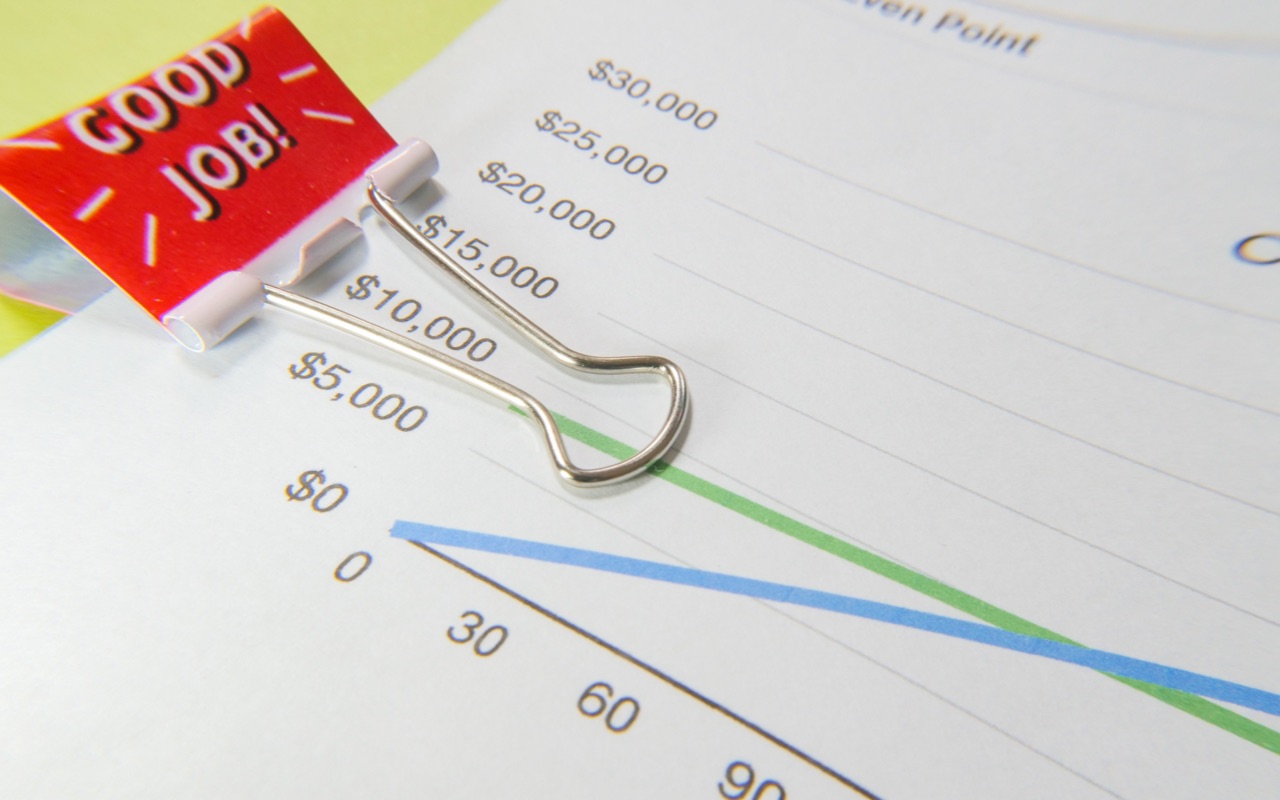Unveiling the Hidden: Accounts Not Appearing on the Balance Sheet
In the complex world of business finance, understanding the intricacies of a company’s balance sheet is crucial for investors and other stakeholders. However, there’s more to a company’s financial health than meets the eye. Off-balance sheet items can significantly impact a firm’s financial standing, yet they remain hidden from plain sight. Are you ready to unveil these concealed accounts and grasp their full implications? Let’s dive in.
Key Takeaways
- This post explains the components of a balance sheet, off-balance sheet items and their implications.
- Common off-balance sheet items can help investors evaluate a company’s financial health, although dividends, R&D expenses and contingent assets/liabilities should also be taken into account.
- Off-Balance Sheet Financing offers various benefits and drawbacks which must be weighed carefully to make informed investment decisions. Detecting such transactions requires reviewing financial statements, evaluating footnotes & disclosures as well as utilizing data analytics.
Understanding Balance Sheets

A balance sheet is a financial statement that provides an overview of a company’s financial position, including assets, liabilities, and equity, at a specific point in time. Unlike an income statement, which shows the company’s revenues and expenses over a period, a company’s balance sheet offers a snapshot of its financial health. Some of the most frequently utilized assets on a balance sheet include cash and accounts payable accounts. However, there are certain items that do not appear on the balance sheet but can still affect the company’s financial position.
This post delves into off-balance sheet items and their implications. The balance sheet equation, Asset = Liabilities + Equity, is a fundamental concept in finance and accounting. Assets, such as cash and cash equivalents, accounts receivable, and inventory, represent the company’s assets. Liabilities, on the other hand, include obligations the company owes to others, such as loans and accounts payable. Equity is the residual interest in the company’s assets after deducting liabilities.
A lack of balance and accuracy in a balance sheet can have catastrophic consequences, making it crucial for a company’s accounting to accurately reflect its financial position.
Off-Balance Sheet Financing: An Overview

Off-balance sheet financing refers to transactions that do not appear on a company’s balance sheet but may have an effect on its financial position, including off-balance sheets activities. These transactions often involve asset ownership being held by a separate entity, such as in operating leases and joint ventures.
Off-balance sheet financing can offer several advantages, such as not adversely affecting the company’s financial standing and transferring risk to third parties. However, it can also mislead investors and create hidden liabilities.
We will scrutinize the purpose and common off-balance sheet items.
The Purpose of Off-Balance Sheet Financing
Companies use off-balance sheet financing to maintain attractive leverage ratios, transfer risk, and increase fundraising possibilities. Off-balance sheet financing allows companies to raise capital without augmenting their debt or equity levels, thus sustaining appealing financial ratios that can attract investors. By shifting risk to another party, companies can reduce their exposure to potential losses, and, as a result, protect their financial health.
Despite these advantages, off-balance sheet financing is not without its drawbacks. The increased complexity of such transactions can make it challenging for investors to fully comprehend a company’s financial position. Moreover, off-balance sheet financing can create opportunities for fraud and lack of transparency, potentially leading to significant financial scandals and investor losses.
Hence, companies must judiciously weigh the pros and cons before embracing off-balance sheet financing.
Common Off-Balance Sheet Items
Examples of off-balance sheet items include operating leases, leaseback agreements, and accounts receivable sold to a factor. An operating lease is a type of lease in which the lessor maintains the leased asset on its balance sheet, while the lessee accounts for monthly rental payments and other associated fees rather than listing the asset and corresponding liability on its own balance sheet. At the end of the lease period, usually there is an option for the lessee to purchase the asset at a much lower cost. This can be a great opportunity for long-term savings!
Another example of off-balance sheet financing is a leaseback agreement. In such an arrangement, a company sells an asset, such as a property, to another entity and then leases the same property back from the new owner. This allows the company to convert the asset into cash without having to record the transaction on their balance sheet.
By understanding these common off-balance sheet items, investors and other stakeholders can better evaluate a company’s financial health and make informed decisions.
Accounts Not Found on the Balance Sheet

In addition to off-balance sheet financing, there are other accounts that do not appear on the balance sheet but can still impact a company’s financial position. These accounts include dividends, research and development expenses, and contingent assets and liabilities. Each of these items can affect a company’s cash flow, profitability, and risk profile, thereby influencing its overall financial health.
Let’s examine each of these accounts in more detail.
Dividends
Dividends are payments made to shareholders from a company’s profits. These payments represent a distribution of the company’s earnings and are not considered assets or liabilities. Dividend accounts don’t appear on the balance sheet. This is because they are not taken into account when calculating a company’s assets and liabilities. Instead, dividends are reported in the statement of changes in equities, which provides information about the changes in a company’s equity during a specific period.
While dividends do not appear on the balance sheet, they can still impact a company’s financial health. The payment of dividends reduces the amount of cash available for other purposes, such as reinvestment in the business or paying down debt. Investors should be aware of a company’s dividend policy and payout ratio, as these factors can provide insights into the company’s financial stability and growth potential.
Research and Development Expenses
Research and development (R&D) expenses refer to the costs associated with the research and development of a product or service, including any intellectual property rights. R&D expenses are considered to be incurred expenses and are not reflected on the balance sheet as a distinct asset. However, these expenses may be capitalized under certain conditions and accounted for as intangible assets on the balance sheet.
Although R&D expenses generally do not appear on the balance sheet, they can have a significant impact on a company’s financial health. High R&D expenses can indicate a company’s commitment to innovation and growth, which may be attractive to investors. On the other hand, excessive R&D spending may strain the company’s cash flow and profitability, potentially impacting its ability to meet financial obligations.
Investors and stakeholders need to scrutinize a company’s R&D expenses in relation to its overall financial position and industry standards.
Contingent Assets and Liabilities
Contingent assets and liabilities are potential assets and obligations that may or may not occur in the future, depending on the outcome of uncertain events. Contingent assets, such as potential economic benefits from legal settlements or patent approvals, are not recognized on the balance sheet unless their existence is confirmed. Similarly, contingent liabilities, such as potential losses from lawsuits or environmental claims, are not recognized on the balance sheet unless their occurrence is probable and the amount can be reliably measured.
These contingent items can have a significant impact on a company’s financial position, as they represent potential gains or losses that may materialize in the future. Investors and other stakeholders should be aware of a company’s contingent assets and liabilities, as they can affect the company’s risk profile, cash flow, and overall financial health.
Understanding the nature and potential impact of these items can help investors make more informed decisions about a company’s financial stability and growth prospects.
Off-Balance Sheet Assets and Their Impact on Financial Statements

Off-balance sheet assets, such as securitization and special purpose entities, can help companies maintain appealing leverage ratios and improve their financial position. However, these off-balance sheet assets may also obscure a company’s true financial position, potentially leading to significant financial scandals and investor losses. Investors and stakeholders need to comprehend the impact of off-balance sheet assets on financial statements and be cognizant of the potential risks tied to these items.
Some off-balance sheet assets, like securitization, involve the sale of financial assets, such as loans, to a separate entity, which then issues securities backed by these assets. This allows the company to remove the assets from its balance sheet, thus improving its financial ratios. However, the company may still be exposed to risks associated with these assets, such as credit risk and interest rate risk.
In order to fully understand the impact of off-balance sheet assets on a company’s financial statements, investors and analysts should carefully review the associated notes and disclosures and consider the potential risks and benefits.
Pros and Cons of Off-Balance Sheet Financing
Off-balance sheet financing offers several advantages for companies, such as cost-effective borrowing, enhanced financial position, and the ability to undertake projects without impacting the balance sheet. By transferring risk to third parties, off-balance sheet financing can also protect the company’s financial health and make it more attractive to investors. However, there are also potential drawbacks associated with off-balance sheet financing, such as increased complexity, potential for fraud, and opacity in liabilities.
Although off-balance sheet financing can offer financial flexibility and enhanced access to capital for companies, investors and stakeholders must meticulously evaluate the potential risks and benefits. In order to make informed decisions about a company’s financial health and growth prospects, investors should be aware of off-balance sheet financing transactions and their potential impact on the company’s financial position and risk profile.
Comprehending the advantages and disadvantages of off-balance sheet financing enables investors to evaluate a company’s financial stability more effectively and make well-informed investment decisions.
Legal Aspects of Off-Balance Sheet Financing

Off-balance sheet financing is a legal practice, provided that companies adhere to accounting rules and regulations, such as the obs accounting method. Under Generally Accepted Accounting Principles (GAAP), off-balance sheet financing is acceptable if the requisite criteria are followed. However, measures have been implemented, such as the Sarbanes-Oxley Act (SOX), to restrict off-balance sheet assets and safeguard investors from abuse.
Regulations are designed to safeguard investors and maintain transparency in financial reporting, thereby making it imperative for companies to adhere to the legal specifications of off-balance sheet financing. Investors should be aware of the legal requirements and restrictions associated with off-balance sheet financing to fully understand the potential risks and benefits. Taking into account the legal aspects of off-balance sheet financing allows investors to make well-informed decisions about a company’s financial health and potential growth prospects.
Real-World Examples of Off-Balance Sheet Transactions
Examples of off-balance sheet transactions in the real world include:
- Securitization of loans
- Operating leases
- Partnerships
- Loan commitments
- Letters of credit
- Revolving underwriting facilities
These transactions can help companies improve their financial positions without impacting their balance sheets, thus enhancing their appeal to investors and other stakeholders.
Understanding real-world examples of off-balance sheet transactions enables investors to evaluate a company’s financial health and growth prospects more effectively.
For instance, a company may engage in a sale-leaseback agreement, in which it sells an asset, such as a property, to another entity and then leases the same property back from the new owner. This allows the company to convert the asset into cash without having to record the transaction on its balance sheet.
Another example is accounts receivable factoring, in which a company sells its accounts receivable to a factor, thus transferring the risk of default to another company. By examining real-world examples of off-balance sheet transactions, investors can gain a deeper understanding of the potential risks and benefits associated with these transactions.
Detecting Off-Balance Sheet Items
Detecting off-balance sheet items can be challenging, as they do not appear on a company’s balance sheet and may be difficult to identify in financial statements. Investors and analysts should be aware of off-balance sheet items and their potential impact on a company’s financial health. To detect off-balance sheet items, it is necessary to analyze a company’s financial statements, look for any unusual transactions, and research the company’s history.
Some methods for detecting off-balance sheet items include:
- Reviewing financial statements
- Evaluating footnotes and disclosures
- Conducting thorough audits
- Examining related party transactions
- Utilizing data analytics
By employing these methods, investors can gain a more comprehensive understanding of a company’s financial position and performance, enabling them to make more informed decisions about the company’s financial stability and growth prospects.
The identification of off-balance sheet items is a vital component of assessing a company’s financial health and should not be disregarded by investors and other stakeholders.
Summary
In conclusion, understanding off-balance sheet items and their potential impact on a company’s financial health is crucial for investors and other stakeholders. While off-balance sheet financing can offer benefits such as improved financial reporting and risk transfer, it can also mislead investors and create hidden liabilities. By being aware of the various accounts not found on the balance sheet, as well as the legal aspects and real-world examples of off-balance sheet transactions, investors can make more informed decisions about a company’s financial stability and growth prospects.
As with any aspect of business finance, knowledge is power, and understanding the intricacies of off-balance sheet items can help investors navigate the complex world of corporate finance with confidence.
Frequently Asked Questions
What does not appear in a balance sheet?
Off-balance sheet items, such as operating leases, joint ventures and contingent liabilities, are not recorded on the balance sheet but can still affect a company's financial position. Common OBS assets include accounts receivable, leaseback agreements, and operating leases.
What is off-balance sheet financing?
Off-balance sheet financing is a type of transaction that does not appear on a company's balance sheet, but still affects its financial position, such as operating leases and joint ventures.
What are some examples of off-balance sheet items?
Off-balance sheet items can include operating leases, leaseback agreements, and accounts receivable sold to a factor.
Join thousands of business-savvy entrepreneurs on our mailing list.
Curated emails that’ll help you manage your finances better.




